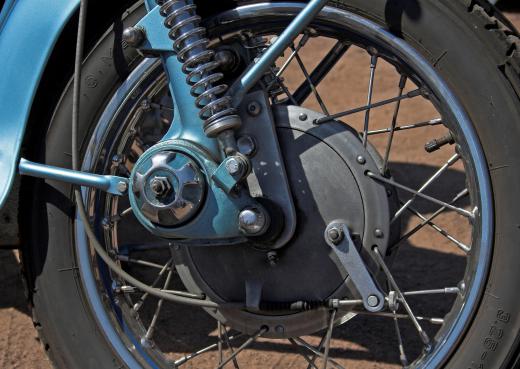Most bicycle spokes come with pre-cut threads to help secure the metal support to a bicycle rim. Sometimes, however, it may become necessary to cut a spoke to a specific length to fit a rim. In this case, a spoke threader will be necessary. This machine allows a user to cut threads on the end of the metal spoke so a spoke nipple can be secured to it. A spoke threader features a hand crank that turns a cutting bit, which in turn rotates around the outside of the round metal spoke.
In most cases, the spoke threader is secured to a bench top or some sort of stable stand to prevent excess movement during the cutting process. A spoke is run through one end of the machine and clamped in place to prevent it from spinning during the cutting process. Before it is secured in the spoke threader, however, the spoke is cut to the proper length using a spoke cutter or saw. The end is usually filed to eliminate any burrs or sharp ends as well. Once clamped in place, the spoke is ready to be positioned inside the cutting bit.

The user will position the bit and tighten it down around the end of the metal spoke. The cutting elements will then be in place to do the right amount of cutting; in some cases, cutting fluid may be applied to the bit, though this is not always necessary. The user will turn the hand crank in the proper direction, and the bit will begin to rotate as it cuts. Once the user has turned the spoke threader handle to cut to the desired depth and length, the bit can be loosened and the spoke unclamped. The spoke is then ready to be used on a bicycle wheel.
Spokes are threaded at the end to allow a small nut called a nipple to be affixed to it. This is placed on the outside of the rim; it is slipped through a hole, and one end of the nipple is large enough to prevent the rest of it from falling through the hole. Once the spoke is laced through the wheel's hub, it is secured to the nipple, which turns and secures to the threads cut into the spoke from the spoke threader. As the nipple is tightened, the entire system is given more tension, which will affect the straightness, or trueness, of the wheel.
